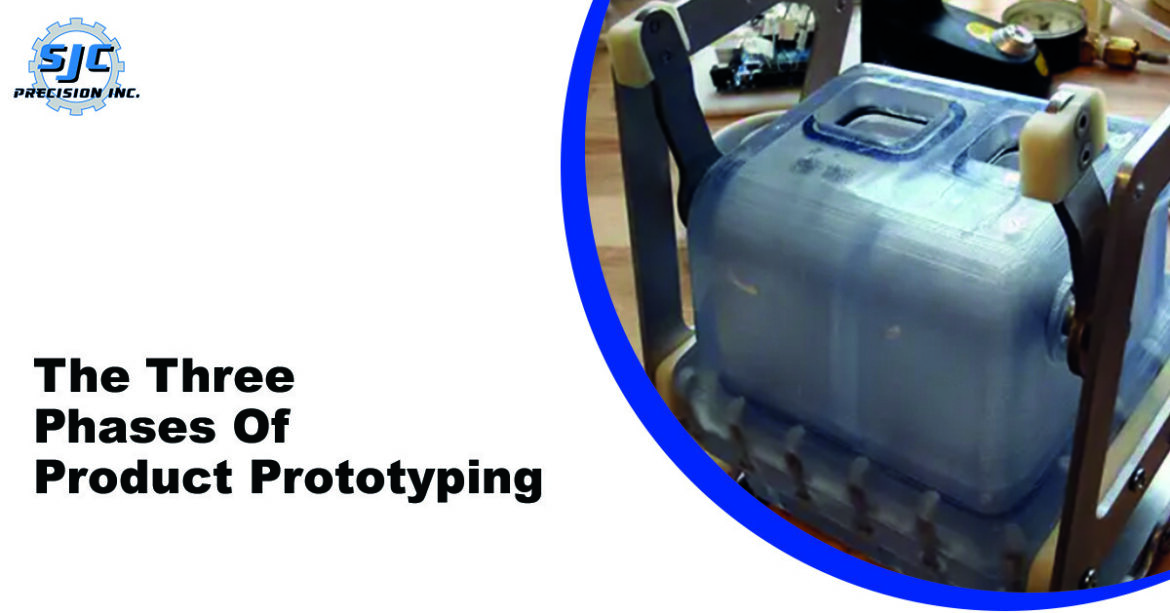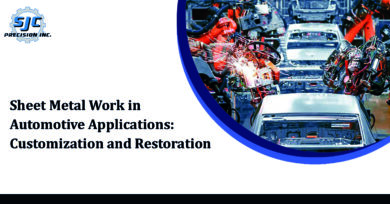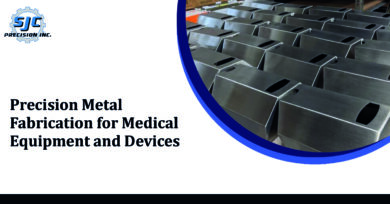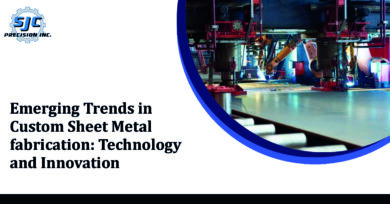Product prototyping is essential in product development, allowing companies to test and refine their designs before committing to mass production. The process can be divided into three phases: conceptualization, design, and testing. Each of these phases plays a critical role in the product’s success, and the process is not a one-time event but an iterative one. In this blog, we will explore the three phases of product prototyping in detail, including the importance of effective communication and collaboration within the team. Whether you’re a product designer, engineer, or manufacturer, understanding the three phases of product prototyping is crucial for your product’s success and your business’s overall success. (Prototype Pilot Full Production Runs)
Why is Product Prototyping Used?
Product prototyping in a machine shop typically involves using various tools and equipment to create a physical prototype of a product design. This can include processes such as CNC milling, lathing, and 3D printing, as well as manual machining techniques such as drilling, tapping,, and grinding. The goal of prototyping is to test and refine the design of a product before it is put into mass production. The process allows for identifying and correcting any design flaws or issues and can also be used to create functional prototypes for testing and evaluation.
Product prototyping (Prototype Pilot Full Production Runs) is used for a variety of reasons. Some of the main reasons include the following:
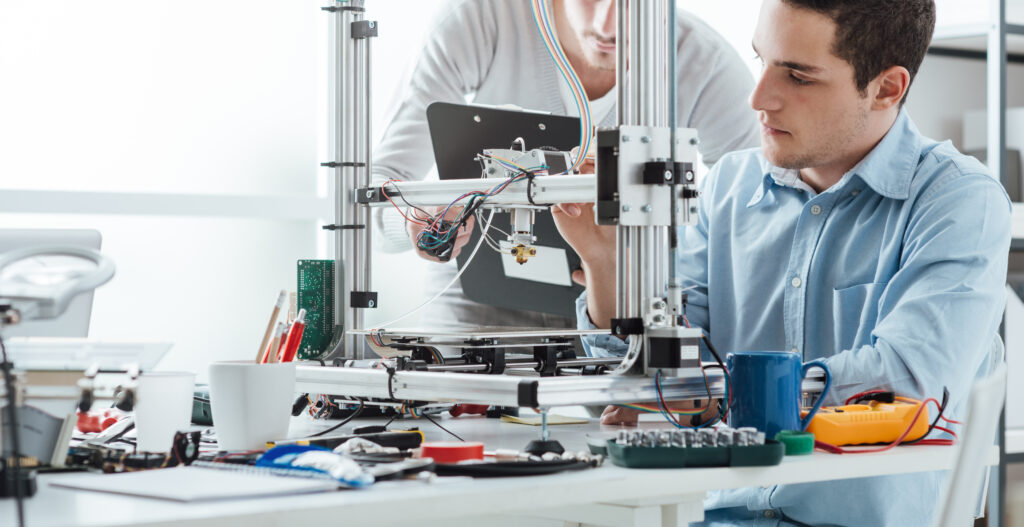
Design Validation
Prototyping allows companies to test and validate their designs before committing to mass production. This can help identify and address any design flaws or issues, ensuring that the final product is of high quality and meets the target market’s needs.
Testing & Evaluation
Functional prototypes can be created for testing and evaluation, allowing for testing the product’s features and functionality. This can help identify any issues or areas for improvement before the product goes into mass production.
User Feedback
Prototyping can also be used to gather feedback from target users, which can be used to refine the design further and improve the product. (Prototype Pilot Full Production Runs)
Cost Savings
By identifying and addressing any issues during the prototyping phase, companies can save money and resources that would have been spent on correcting problems during mass production.
Innovation
Prototyping also allows companies to experiment with new ideas and technologies, which can lead to the development of innovative products.
Communication
A prototype is a tangible representation of the product. It can be used to communicate the design and features of the product effectively to stakeholders, investors, and other members of the team.
Overall, product prototyping is an essential step in the product development process that allows companies to create high-quality products that meet the needs of their target market. It also helps them to minimize the risk of costly mistakes by identifying and addressing issues early in the process.
The Three Phases Of Product Prototyping
The process can be broken down into three distinct phases: conceptualization, design, and testing. In this blog post, we’ll take a closer look at each of these phases and how they contribute to the overall success of a product (Prototype Pilot Full Production Runs).
Conceptualization
The first phase of product prototyping is conceptualization. This is the stage where ideas and concepts for a new product are generated and evaluated. It is essential to consider the target market, the product’s intended use, and any potential competitors. This phase is critical to the product’s success, as it sets the direction and goals for the rest of the development process.
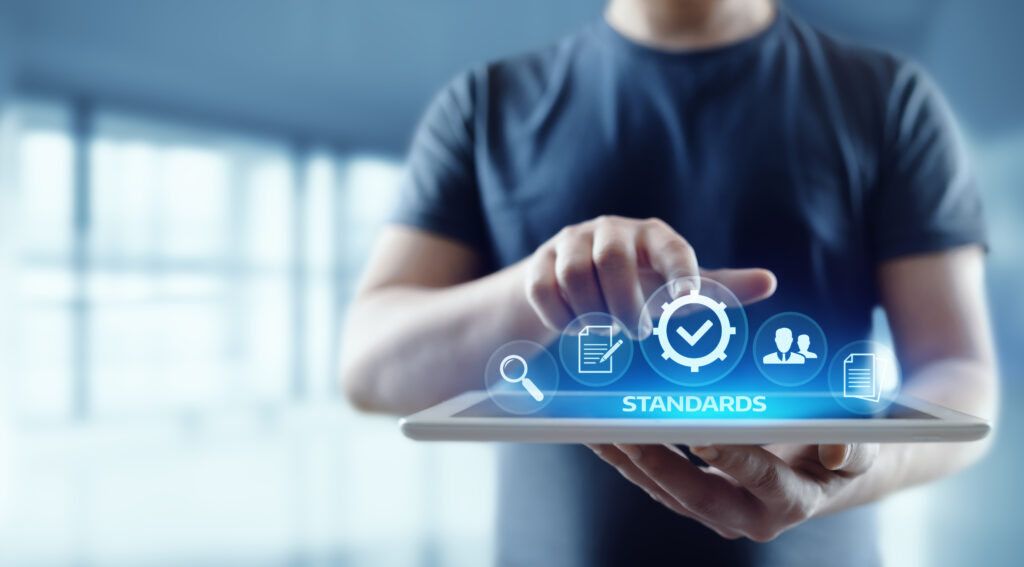
Design
Once the product concept has been defined, the next step is the design phase. This is where the product’s form, function, and aesthetics are determined. Detailed drawings and specifications are created to guide the manufacturing process. Computer-aided design (CAD) software is often used in this phase to create detailed 3D models of the product. It is essential to consider issues such as manufacturability, cost, and ease of assembly during the design phase.
Testing
The final phase of product prototyping is testing. This is where the product is built and evaluated for performance and reliability. Functional prototypes (Prototype Pilot Full Production Runs) are typically built for this phase, allowing testing of the product’s features and functionality. This is also where any issues or design flaws are identified and addressed. Testing can include both lab-based testing, as well as real-world testing with target users.
It’s important to note (Prototype Pilot Full Production Runs): that the three phases of product prototyping are not always linear and may overlap or coincide. This is especially true for the testing phase, which may be ongoing throughout the development process. Additionally, the prototyping process is not a one-time event, and it’s an iterative process that may involve multiple rounds of testing and refinement.
Another critical aspect of product prototyping is communication and collaboration. The process typically involves a team of individuals with different skill sets and expertise, including product designers, engineers, and manufacturers. Effective communication and collaboration within the team are crucial for the product’s success (Prototype Pilot Full Production Runs).
Conclusion
In conclusion, the procedure for creating a product must include product prototyping. Conception, design, and testing are the three separate stages of the process. Each stage is crucial to the product’s success, and the process is incremental rather than a single event. The product’s success also depends on the team’s ability to communicate and work together effectively.
By understanding the three phases of product prototyping, companies can ensure that their products are developed efficiently and effectively, increasing the chances of success in the market. It also allows them to test, validate, and refine their designs, gather feedback, experiment with new ideas and technologies, communicate effectively; and save money by identifying and addressing issues early on in the process. Product prototyping is a powerful tool that should not be overlooked in product development. Prototype Pilot Full Production Runs)


